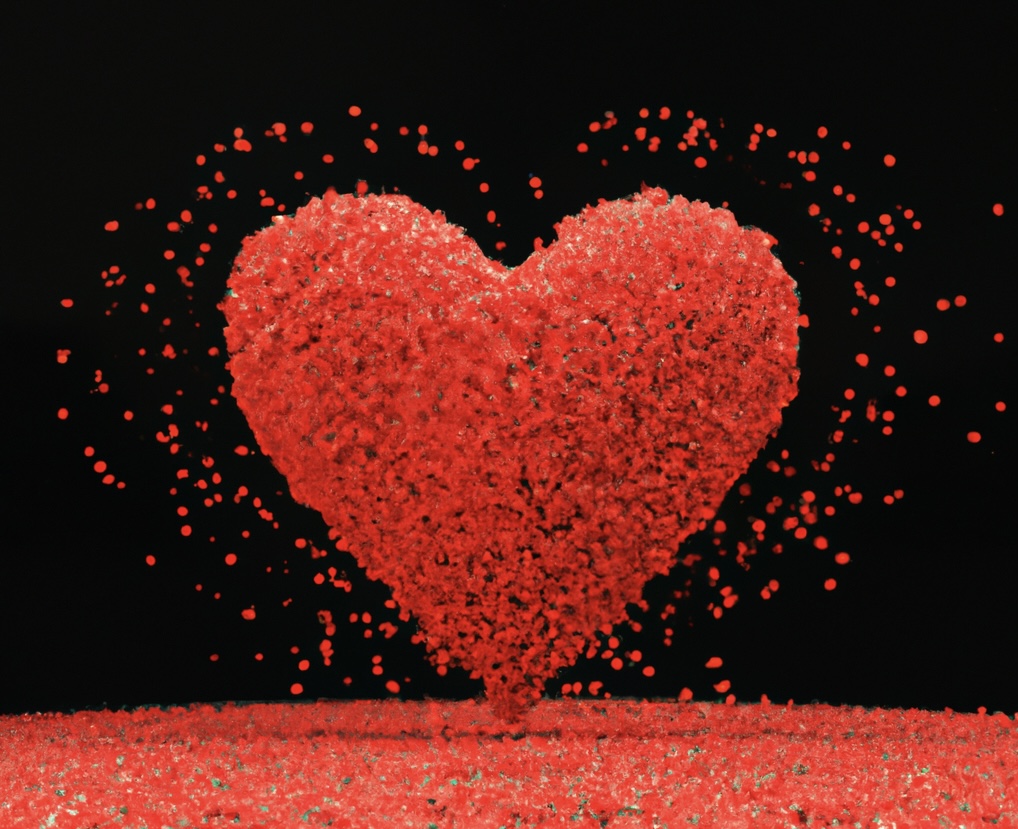Prerequisites for love are the ability to identify needs and the ability to differentiate between gifting work and obligated work which are skills NVC focuses on.
This definition scales to self love, romantic love, child love and environmental love. In This definition love is not a binary yes or no, it is a quantity and a quality.
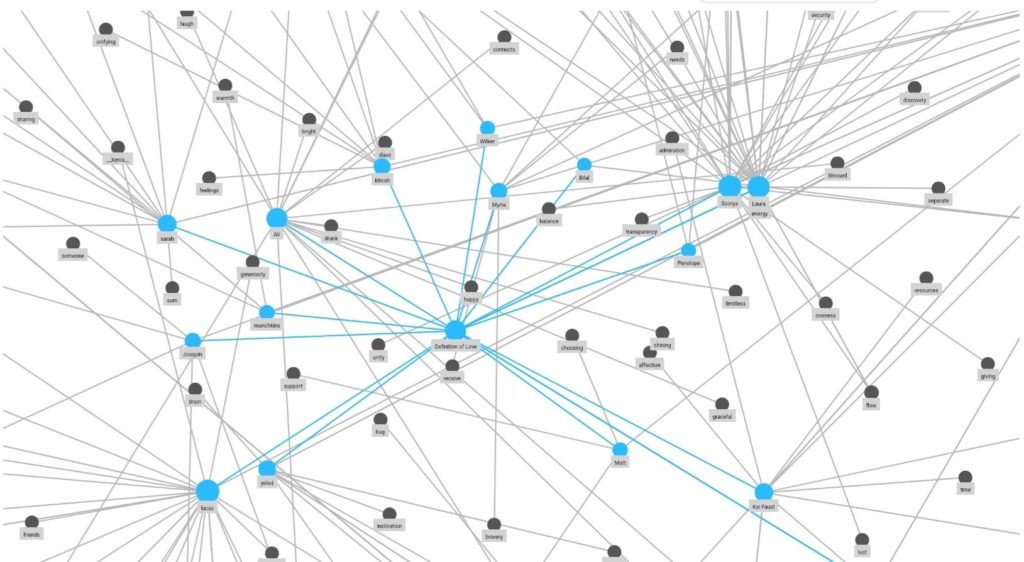
- A graph of my friends definitions of love. Except for Laura and Soorya there is little word compatibility so it’s important to first have an agreed definition
The Science
My definition of love is based on an inherent ability humans and many other forms of life have. Brains with enough complexity can mimic and mirror. This mimicking creates internal embodied models of others by activating our mirror system allowing us to understand other people’s needs.
Our brain has a very efficient way of storing data. We use the same neurons both for processing and understanding other people's movement and for creating our own movements. This makes a lot of computational sense because in general humans have similar bio mechanics. By mimicking someone we also get an internal snapshot of their emotional state and of their intentions and goals. We can compare the external state we are witnessing with our internal sensations. We can use this to decipher people’s needs. When someone yawns we yawn and the need for sleep is communicated and even helps us sync rhythms. This is the basis of empathy and love. It is also the basis for abstract learning like language. Babies can learn sign language before they are verbal and quickly learn the association between body language and reward or punishment.
Another important thing to understand is that our brain with its 86 billion neurons is organized in various hierarchies that have various levels of agency. Our brain can parallel process but we only have one output. We can only do one action at a time. This many to one function is gated by a part of our brain called the basal ganglia. The basal ganglia is constantly inhibiting motor output which means the motor command needs to be strong enough to overcome the inhibition. I imagine all the different possible motor outputs as sperm racing to enter the basal ganglia, it's a winner take all competition. Some parts of our brain are sending motor outputs optimizing for very specific conditions and needs that don’t always benefit us as a whole.
Think of an addiction pattern as an extreme example. Parts of the brain can hijack our behavior to optimize for a specific need without caring how it will affect the wider system. These addiction parts can overcome the basal ganglia threshold faster than other parts. To foster self love we need synergies and open communication between different parts of our brain. We need to slow down some of the fast automatic processes so that our frontal cortex can catch up and give us more options. When we slow down we can separate needs from unhealthy tactics and be more creative about fulfilling our needs.
The same happens when we embody someone else's needs. We create an internal model that becomes part of our own system and thus when we work to fulfill these needs our reward system is activated. This is why mindfulness and being aware of your own needs is the first step to maximizing love.
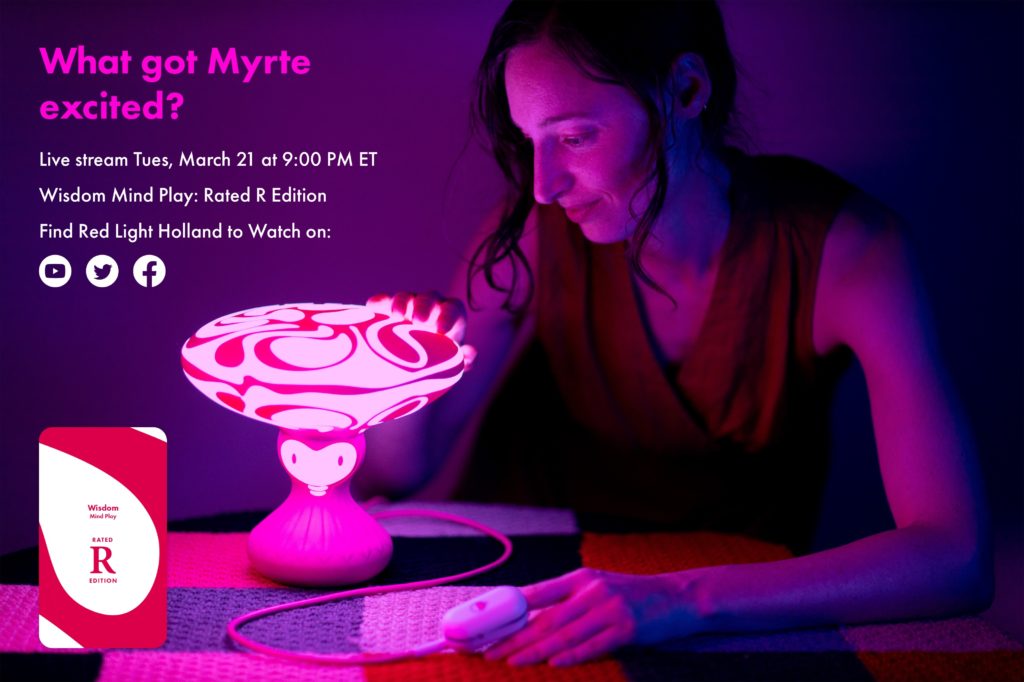
- I’m launching a biofeedback lamp with a card game specifically designed to utilize mindfulness to improve intimate connections: https://www.bringwisdomhome.com/
Self Love
Until my 30's if you asked me if I loved myself I would say yes 100%! I was a big fan of Ayn Rand with no lack of self esteem. Then, I took psychedelics and discovered all these parts in my system that I was shutting off, dysociating from and inhibiting. For many years I inhibited many needs as I had no healthy tactic to fulfil them. I shoved down my need for connection, to be seen, touched, understood. Even my basic need for food was under lock. Between being lactose intolerant to the pressure on females body's to be thin it seemed better to mute hunger sensations until they would scream and I would get hangry. I didn’t feel I was inhibiting anything. I didn't know these parts were there.The T.V. character I looked up to was Data the android from Star Trek, who was always curious and kind but always separated from humans. I thought an actual sense of connection was an asymptote that could never be reached. I believed true understanding and a sense of oneness with others was a myth, like santa clause, an illusion to find hope in.
Psychedelics Break Down Prior Knowledge
My first explorations of psychedelics were with romantic and sexual partners that had a lot more psychedelic experience than me. Both of them were amazing guides offering me safety and tools to navigate this mysterious new way of being. On my first full dose the thin veil of disconnect from others that was the basis of my reality had disappeared. But with that, other substantial walls were gone too. The needs that were repressed over the years, the parts of me that I judged as weak, pathetic or unattainable from such an early age that I didn't even know existed, started coming up to the surface.
Understanding Our Trauma Parts - Attachment Theory
Attachment theory, developed in the mid -20th century by John Bowlby and Mary Ainsworth explains how early interactions between infants and their primary caregivers can shape the child's emotional and social development and affect their adult relationships where they can recreate the same dynamic with a caregiver. Attachment styles are typically classified into four categories:
- Infants with a secure attachment style tend to explore their environment freely when their caregiver is present, but become upset when the caregiver leaves. When the caregiver returns, the infant seeks comfort and is easily soothed.
- Infants with an anxious-preoccupied attachment style may become clingy and anxious when their caregiver leaves, and may have difficulty being soothed when the caregiver returns.
- Infants with an avoidant-dismissive attachment style may seem indifferent to their caregivers leaving and returning, and may avoid seeking comfort from their caregivers altogether.
- Infants with a fearful-avoidant attachment style may display a mixture of behaviours associated with both anxious-preoccupied and avoidant-dismissive attachment styles.
It's important to understand that these behaviors can be contextual and rather than putting a person into a box of one of these styles I recommend categorizing various behaviors each of us may have under different situations.
Through my teenage years and into my 20's I was mostly avoidant. Occasionally I would have episodic mental health crashes where I would go into fits of crying and shaking for 6 - 12 hours. I could rarely track down any logical reason and kept this mostly a secret except from one very close friend who had similar issues. When I started to have longer relationships in my 20's this was a challenge for my partners’ who had no clue what to do. I was in my early 30's when a partner who saw me in this state said it seemed to him like PTSD. The symptoms fit but it took some more deep diving into my hidden subconscious to find the attachment trauma that was behind them.
Loving Our Traumas
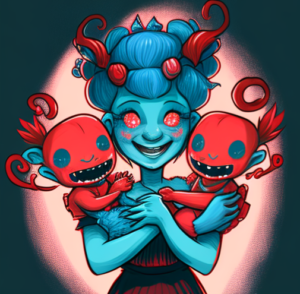 When repressed parts which have suffered through trauma start reconnecting to the rest of the brain don’t expect them to be happy or collaborative.
When repressed parts which have suffered through trauma start reconnecting to the rest of the brain don’t expect them to be happy or collaborative. It's been a long journey where psychedelics were a crucial part in helping me understand the needs of these repressed parts. Other tools were non-violent communication, somatic therapy and improv theatre. There were a lot of moments of dysregulation, tantrums, crying and fear. My father's willingness to support my healing had a huge effect on healing the attachment trauma.
I slowly began to be able to use my non violent communication 'Giraffe ears' to hear the needs of the trauma parts without getting sucked into emotional un-regulation or a complex narrative. It can be as simple as identifying I’m hungry or thirsty when suicidal ideation thoughts come up.
I’ve learnt that these parts deeply enjoy food if it doesn’t come at the expense of caged animals as they have a strong need for freedom. I've learnt to listen to the hunger signals and support these creative chefs in their food exploration. These parts are also hyper sensitive to touch and have a need for softness, comfort and body warmth. They are also incredibly curious with a deep need to understand the structural integrity of things.
Together with learning to identify the needs I went through a process of accepting them. I accepted being a social animal and my skin hypersensitivity. I came to understand that these needs are not a weakness but the fabric from which I am made of. Then, I started to figure out tactics to fulfill these needs. Let’s take the need for understanding structural integrity as an example. This need might come out as compulsions to throw, bang and destroy objects including compulsions to self harm. By identifying the need I learnt to not be afraid of the compulsions and come up with other tactics to fulfill it. With the recommendation of my therapist I went to try a break room and I regularly create experimental spaces to explore gooey non-newtonian physics as well as continue to practice martial arts to explore the strength of the body.
Loving in community
I've never been monogamous. It never made sense to me. Loving only one person seemed like a stifling existence where there was no chance all my needs would be met. Putting a random barrier on what my vagina could and couldn't do with other consenting bodies was also never in my definition of love.My baby parts will sometimes claim to be monogamous but when I check if they love different partners they do. They perceive the tribe they are connected to as a single entity, their caregiver.
By reconnecting to my own very young parts my capacity to build connections has grown. Having more secure attachment abilities means I can better deal with relationship stress. My prefrontal cortex can stay active without the baby parts going into detachment mode and hijacking the system with beliefs that their very survival is in danger.
Have you ever seen multiple Pendulums sync? I still have nightmares from trying to solve the differential equations that govern the synchronisation movements. The gist is that vibrational energy can transfer through a medium that connects the Pendulums causing them to sync. I think relationships can be similar. We can synchronise to each other's needs as long as we have a medium to transfer the information. It's up to us to build that medium not only with words and language but with our embodied selves.
Anthropologist Robin Dunbar, suggested that the size of the neocortex, the part of the brain responsible for conscious thought and language, limits the number of social relationships that an individual can effectively manage. According to Dunbar's theory, this limit is around 150, which is often referred to as "Dunbar's number."
While our current use of technology and social media might allow us to maintain a larger number of weaker connections, research shows it likely comes at the cost of less actual support and more feelings of isolation. I believe that with the use of feedback from embodied technology and psychedelics we can increase our tribe number. I grew up with Asimov's foundation, not the shitty tv but the books. I would constantly debate with myself around the dichotomy of potential human evolution presented in the book. Would it be better if humans evolved into a future with a more collective consciousness but lost their individuality and personal freedoms?
Experimenting with Psychedelics made it clear to me that the dichotomy in the books was false. Our brains have a potential of entering states of high social coherence and collective consciousness and then existing those states, integrating back into a single (very complex) entity.
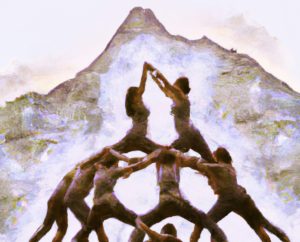
- We can become part of larger social systems while maintaining our agency.
Environmental love
I became aware of global warming when I was around 11 and would go around telling everyone and feeling a lot of despair. Today too, there are so many unmet needs in the wider environment I can easily get overwhelmed. This is where healthy boundaries come in yet again. Being in a state of despair or crumbled in a corner is not helping. Cultivating a gratitude practice has been very helpful in building up resilience. I also have small practices of caring for my immediate environment more. I don't know how to fix all the world's problems but I can keep asking myself how I can help.I started walking around with an extra trash bag to pick up trash. I Donate to friends and friends of friends that need help when I can. I'm trying to build a sustainable home within an eco community, learning about water harvesting, composting and gardening. I'm limiting my flights and starting to become more politically active again, after some serious burn out on that front. I also encourage my larger community to eat more plant based food. The billionaire escape fantasies Douglas Rushkoff writes about are unattainable and for me unwanted.
We can only live a fulfilling life with community. We don't need to be fully sustainable ourselves, we need to build sustainable communities. If we love our environment and gift it our work towards reducing carbon emissions, increasing biodiversity and plant life our outcome will be much improved. Psychedelics in nature have been the most healing for me and helped shift my despair into love.
Many think psychedelics might help drive a more environmentally conscious society. Once again we need to remember that psychedelics can only open the door we need to walk through it, changing our lifestyle, speaking up and taking action as forms of loving our environment.
